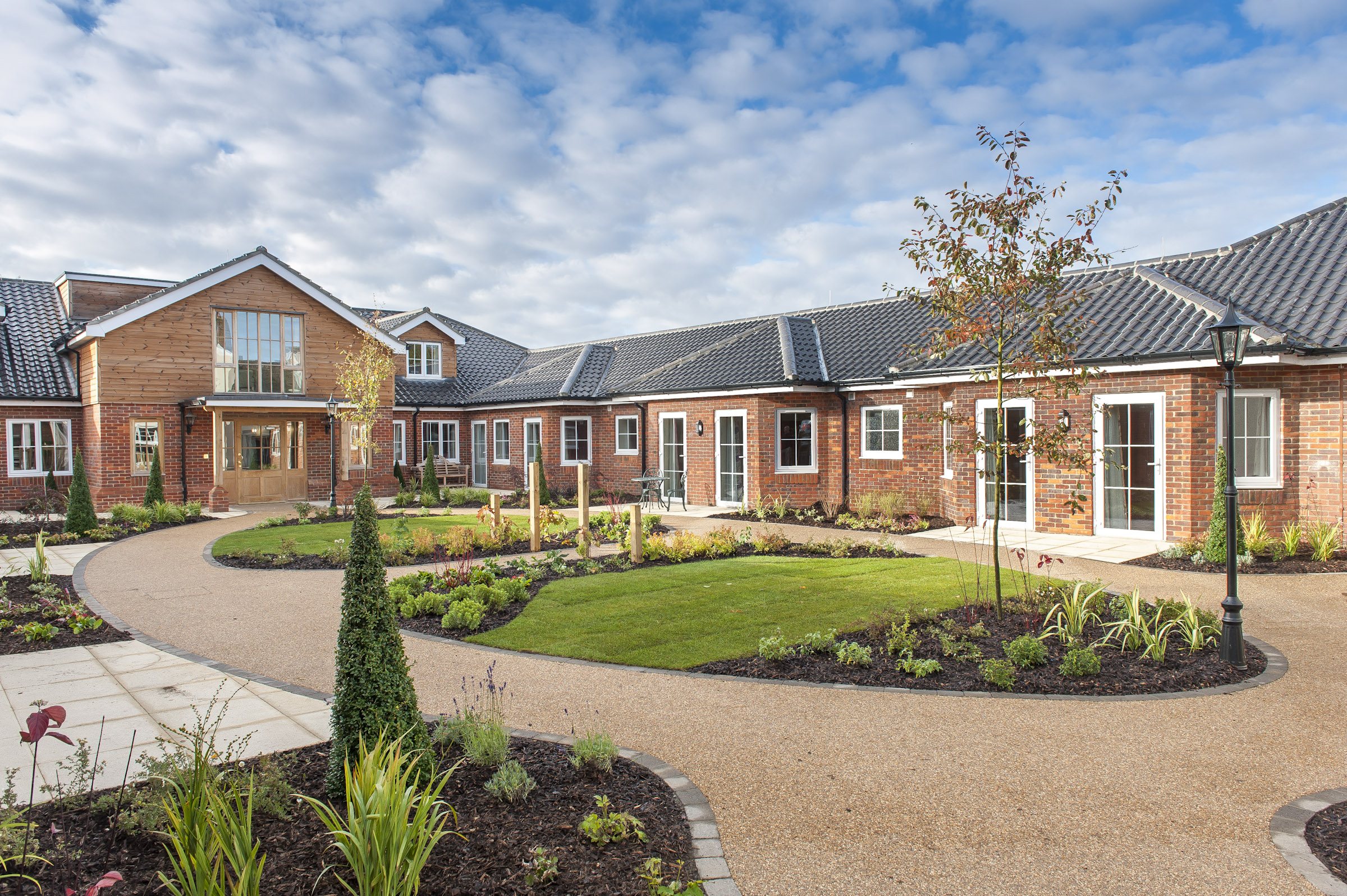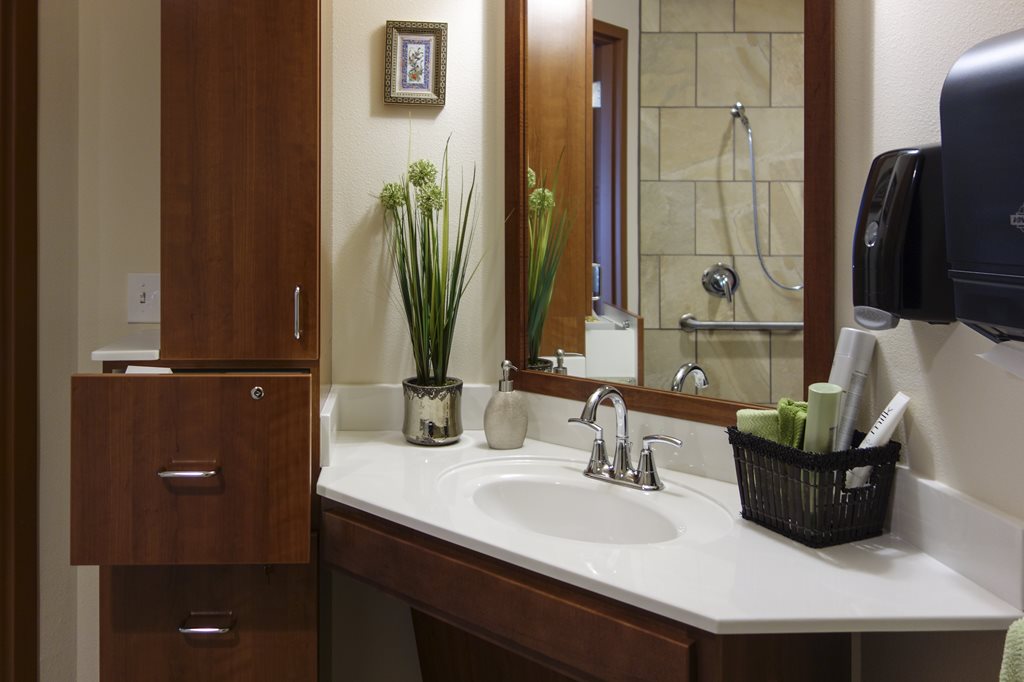
Today, 703 million adults are aged 65 or older. By 2050, that number will explode to 1.5 billion, or one in six people. To keep up with the unprecedented influx of American seniors, the American Seniors Housing Association (ASHA) estimates the United States needs over 3 million senior housing units by 2040. For seniors aged 80 and older alone, the country will need to build nearly one million units in the next twenty years.
It’s clear the senior housing industry is booming. Assisted living communities are scrambling to stake their claim on the market by innovating and modernizing their facilities and offerings to appeal to the incoming demographic.
If you’re thinking about senior housing for a loved one, read on to find out the latest trends in assisted living communities and how they are changing with the times.

1. The Rise of Ghost Kitchens and Food Delivery Services
Assisted living communities typically provide residents with three meals a day and an array of menu choices and substitutions for each meal. But these dining services are often a cost center, which means senior housing providers are losing money with them.
Large assisted communities might balance out losses by cutting expenses in other areas. However, smaller facilities find it more challenging to keep costs low while still providing a pleasurable dining experience for residents.
Ghost kitchens and food delivery services are arising as a solution to the dilemma senior housing providers face. Also called “cloud kitchens” or “dark kitchens,” ghost kitchens are like a virtual restaurant. Locations have a commercial kitchen, but there’s no physical storefront, waiters, or dining area for guests. Food is prepared only for delivery.
While the concept is still new, ghost kitchens are rapidly growing in numbers as giants like McDonald’s and Chick-fil-A jump on board. Even the former Uber CEO and co-founder, Travis Kalanick, is joining the ghost-kitchen bandwagon with a startup that’s backed by $400 million from Saudi Arabia.
Many ghost kitchens partner with meal-delivery apps like GrubHub, UberEats, and DoorDash for a seamless user experience. As a result, these services are also sure to boom as a new era of dining becomes the norm.
Expect more and more senior living providers to turn to cloud kitchens and door delivery services in 2020 as they seek to trim in-house expenses. It’s a move that’s reminiscent of assisted living facilities doing away with internal resident transportation services and replacing them with new partnerships with ride-hailing companies like Uber and Lyft.
2. Active Aging Becomes the Name of the Game
The World Health Organization identifies active aging as “the process of optimizing opportunities for health, participation, and security to enhance the quality of life as people age.” Active aging is an increasing desire within the senior community as older adults search for an enriching life in their golden years.
While it was once a term for businesses to describe its offerings to interested consumers, it’s now an entire industry ripe with opportunity. Assisted living facilities are scrambling to carve out a niche in this growing sector to meet the shift of interests in the newest cohort of seniors.
In response to the changing demands, facilities are overhauling their marketing and organizational models to focus on creating a culture of wellness. The new vision combines physical fitness, social well-being, continued learning, and cognitive health for assisted living communities that are the hub for an engaged lifestyle.
These types of senior housing will soon be brimming with activities, amenities, and opportunities to attract seniors who no longer want to simply pass the time in retirement. Some facilities, for example, are transforming their small gyms into robust fitness centers with classes like Zumba and yoga to make fitness fun and to provide a meaningful social, physical, and mental experience for seniors.
Many facilities are also adding to their senior program offerings with book clubs and classes in painting, sign language, foreign languages, writing workshops, and more. Others are upping their community’s social agenda to have game nights, barbeques, and organized group outings to restaurants, movies, museums, and theatres.

3. Increased Use of Technology for High-Tech Care
While assisted living facilities of the past focused on hospitality with some healthcare services added on, today’s senior living communities are moving towards a more integrative model. Active aging falls under this model, but senior living providers are also coming to terms with the fact they need to step up their role in healthcare management.
As life expectancies rise, seniors as requiring more care as they reach increasingly higher double- to triple-digit ages. For example, 54 percent of adults 65 and older take four or more prescription drugs, according to a 2019 KFF health tracking poll.
To mitigate risks and liabilities, many assisted living facilities are getting with the times and digitizing their medication management systems and resident health files. Tracking medication management electronically helps to reduce incidences of adverse drug reactions, keeps records up-to-date, and makes it easier to access a resident’s health file.
But digitized files are only a small part of bringing assisted living facilities up to 21st-century standards. Those genuinely interested in modernizing are taking advantage of the robust solutions available at our fingertips. This includes smart-home health monitoring systems and wearables that wirelessly track a resident’s medications and vital signs and call for help when it senses something could be wrong.
These monitoring systems are part of an emerging digital healthcare protocol. It’s an attractive option for senior housing facilities because it promises to decrease operational costs, improve care quality, and build a sustainable senior-care business model.
Included in the cutting-edge, digital healthcare model is telehealth. Seniors can access from their home an entire healthcare team, including primary care physicians and home aides. And with data sent from health monitoring systems, doctors and medical personnel can provide a more personalized and precise level of health care to their patients.
4. Make-Overs in Senior Housing Units of Assisted Living Communities
As home prices soar and space to build shrinks, millennials are finding themselves moving into ever-smaller apartments in the name of affordability. Micro-apartments of 200 to 400 square feet with an ultra-efficient design are taking over. But, what they sacrifice in size, they make up for in amenities. Many buildings, such as Carmel Place in Manhattan, maintain gyms, large lobbies, lounges, roof decks, and more for the enjoyment of their residents.
This trend in smaller housing is trickling down to assisted living communities as seniors look for accommodations that won’t break the bank and developers seek to maximize profits while still standing out in a competitive industry.
Communities like Benchmark’s The Branches of North Attleboro in North Attleboro, Massachusetts, are paving the way for this trend. Benchmark’s assisted living facility opened in November 2017 to provide an affordable assisted living model for middle-income seniors.
Each apartment has a private bathroom and bedroom with a connecting common space shared with a neighboring resident, similar to living with a roommate. The Branches of North Attleboro uses questionnaires to match residents.
In line with the organization’s goal of encouraging community involvement, a fringe benefit to this arrangement is it decreases loneliness in seniors—a chief complaint among aging adults. Space saved in individual apartments was also used to create expansive common areas to allow for more opportunities for residents to socialize, including a library, lobby, dining room, and outdoor patios.
On the other end of the spectrum, luxury assisted living facilities are also expected to get a makeover to cater to the design preferences of baby boomers. It’s anticipated that outdated home layouts will give way to fully-equipped kitchens, spacious bathrooms, and walk-in closets that resemble the homes boomers lived in.
Luxury senior housing communities will maintain a sense of individual privacy in the home while using outside spaces to encourage the social interaction, mental well-being, and physical health assisted living residents are after.
5. New Innovations From Big-Name Hires
For what might be decades, assisted living communities have been borrowing their aesthetics and ambiance from upscale hotels to give the sense its residents are pampered and well cared for. But what was once modern in the industry has grown to feel outdated and stale.
To meet the demands of a new generation of seniors, the assisted living industry is hiring new CEOs to bring in fresh perspectives and to reimagine senior living. While it’s true senior living communities have been hiring top talent for years, 2020 is the year where the game is brought to new heights as some of the most prominent players across industries cross over to the assisted living sector.
While it’s impossible to predict who some of the new hires will be, we can look to recent hires like Niki Leondakis to judge the caliber of people businesses are selecting to revamp the senior housing sector. She was the Equinox CEO and President of Kimpton Hotels before being taken on as President of The Wolff Resident Experience Company.
Another notable hire last year at Aegis Living was Kris Engskov, former White House Press Secretary and President of U.S. Retail at Starbucks. As an operations expert extraordinaire, Engskov’s expertise is precisely what Aegis Living needs as they prepare to scale up regionally.
It’s too soon to tell exactly how these leaders will change the face of assisted living communities in 2020 and beyond. Still, new innovations are sure to be on the horizon as they seek to adapt senior housing to meet the wants of baby boomers.

The Future Is Golden for Assisted Living Communities
It’s an exciting time to search for assisted living communities for a loved one. An influx of baby boomers reaching retirement age is pushing senior housing providers to innovate and move away from a passive senior lifestyle to one that moves older adults toward holistic health. As assisted living organizations structure their communities to emphasize better healthcare and greater social connectivity, physical activity, and cognitive health, seniors are living longer, healthier, and happier.
Help your aging loved one experience their best life. Find assisted living facilities near you here!






